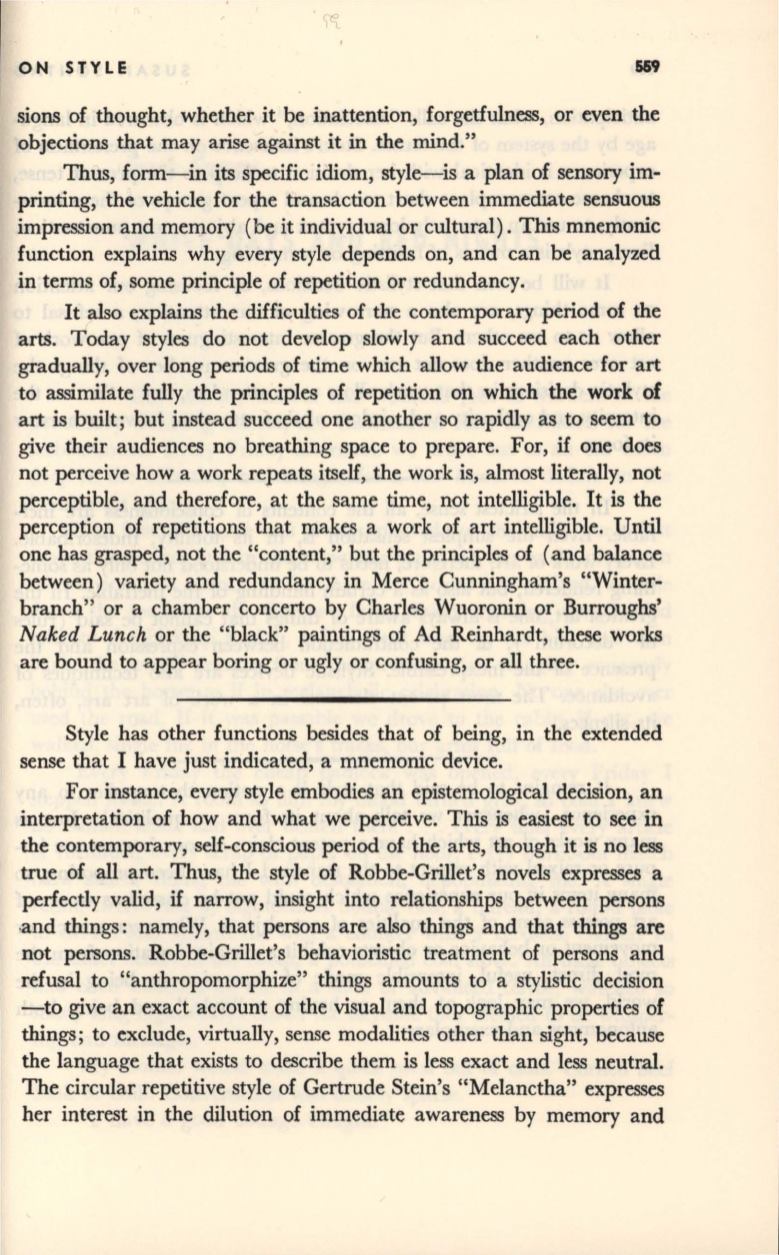
ON STYLE
sions of thought, whether it be inattention, forgetfulness, or even the
objections that may arise against it in the mind."
Thus, form-in its specific idiom, style-is a plan of sensory im–
printing, the vehicle for the transaction between immediate sensuous
impression and memory (be it individual or cultural). This mnemonic
function explains why every style depends on, and can be analyzed
in terms of, some principle of repetition or redundancy.
It also explains the difficulties of the contemporary period of the
arts. Today styles do not develop slowly and succeed each other
gradually, over long periods of time which allow the audience for art
to assimilate fully the principles of repetition on which the work of
art is built; but instead succeed one another so rapidly as to seem to
give their audiences no breathing space to prepare. For, if one does
not perceive how a work repeats itself, the work is, almost literally, not
perceptible, and therefore, at the same time, not intelligible. It is the
perception of repetitions that makes a work of art intelligible. Until
one has grasped, not the "content," but the principles of (and balance
between) variety and redundancy in Merce Cunningham's "Winter–
branch" or a chamber concerto by Charles Wuoronin or Burroughs'
Naked Lunch
or the "black" paintings of Ad Reinhardt, these works
are bound to appear boring or ugly or confusing, or all three.
Style has other functions besides that of being, in the extended
sense that I have just indicated, a mnemonic device.
For instance, every style embodies an epistemological decision, an
interpretation of how and what we perceive. This is easiest to see in
the contemporary, self-conscious period of the arts, though
it
is no less
true of all art. Thus, the style of Robbe-Grillet's novels expresses a
perfectly valid,
if
narrow, insight into relationships between persons
.and things: namely, that persons are also things and that things are
not persons. Robbe-Grillet's behavioristic treatment of persons and
refusal to "anthropomorphize" things amounts to a stylistic decision
-to give an exact account of the visual and topographic properties of
things; to exclude, virtually, sense modalities other than sight, because
the language that exists to describe them is less exact and less neutral.
The circular repetitive style of Gertrude Stein's "Melanctha" expresses
her interest in the dilution of immediate awareness by memory and


